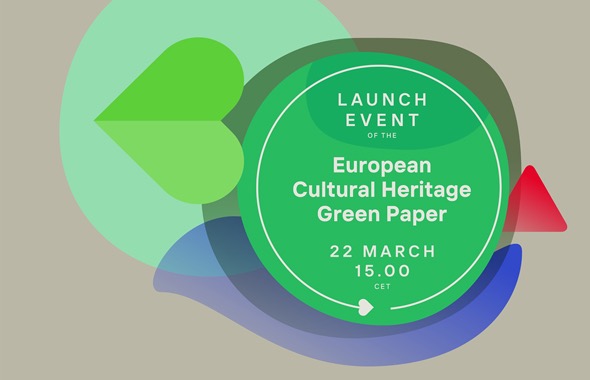
30Jul
CLIC contribution to the European Cultural Heritage Green Paper
One of the things we have loved most about our project has been the amazing opportunity it has given us to discuss challenges and solutions for the cultural heritage sector, being involved in pioneering initiatives which are paving the way for a real change. This is the case of the European Cultural Heritage Green Paper “Putting Europe’s shared heritage at the heart of the European Green Deal”, a much awaited document to which CLIC has proudly contributed providing a focus on the circular economy approach to cultural heritage adaptive reuse.
The European Cultural Heritage Green Paper has been produced by Europa Nostra in close cooperation with ICOMOS and the Climate Heritage Network, with the input of other members of the European Heritage Alliance. Furthermore, it has been supported by the European Investment Bank Institute and the Creative Europe programme of the European Union.
Presented at the end of March 2021 through an online webinar attended by over 550 participants, the Paper focuses on the strategic role of cultural heritage in achieving the ambitious goals of the European Green Deal, launched by the European Commission to make Europe the first carbon-free continent by 2050, in terms of environmental, social and economic sustainability objectives.
The innovation of this document consists in the awareness of major Institutions on the importance of the role of Cultural Heritage for the achievement of environmental, social and economic sustainability goals. Objectives to be achieved by integrating cultural heritage into climate action and inspiring the mobilisation of the heritage communities for transformative climate action, as highlighted by Andrew Potts, Lead Author of the paper. He also states that the future of Europe’s cultural heritage depends on the success of the Green Deal. “At the same time, Europe’s shared values and common heritage offer undeniable potential to help accomplish the Green Deal’s mission. This is why cultural heritage is essential to the success of the European Green Deal”.
The document proposes recommendations for both administrators and stakeholders, as well as strategies to overcome potential conflicts between heritage protection and European action. It emphasises the relationship between cultural heritage and the key areas of the Green Deal: among other, smart mobility, research and innovation, education and training, green finance, and circular economy.
The CLIC researchers Antonia Gravagnuolo (CNR IRISS) and Jermina Stanojev (Uppsala University), who contributed as expert members, focused on the circular economy approach in the adaptive reuse of cultural heritage, which can become a key strategy to renew the historic building stock co-generating multiple positive impacts for cities and communities. Today is more relevant than ever to adopt a circular approach, considering that 80% of the buildings in use by 2050 are expected to already exist today, with consequent negative repercussions on achieving the energy efficiency targets set by the Green Building Council (“Bringing Embodied Carbon Upfront: Coordinated action for the building and construction sector to tackle embodied carbon’, 2019).. Particular emphasis is put on the key role of cultural landscapes in Europe, which is also recognised in the European Cultural Heritage Green Paper in building circular and sustainable food systems that connect rural and urban communities.
